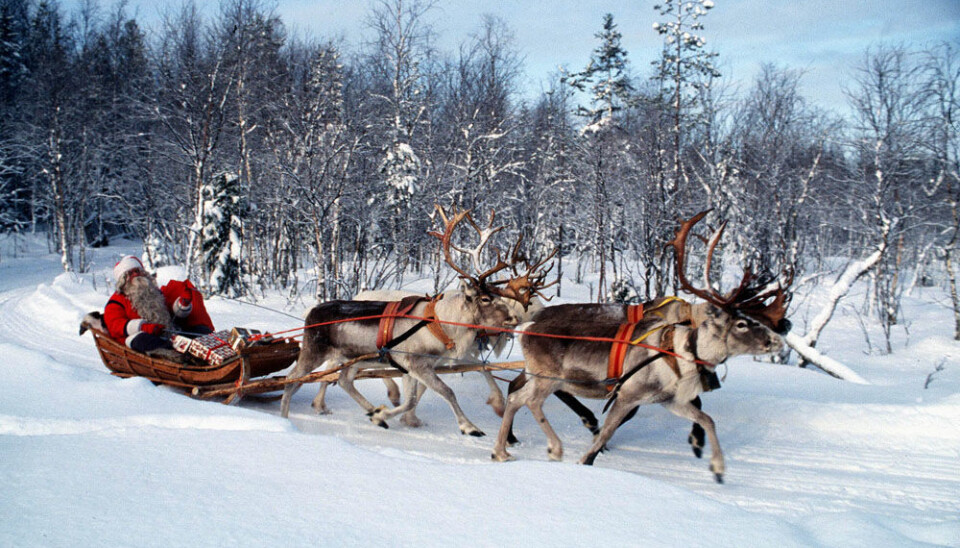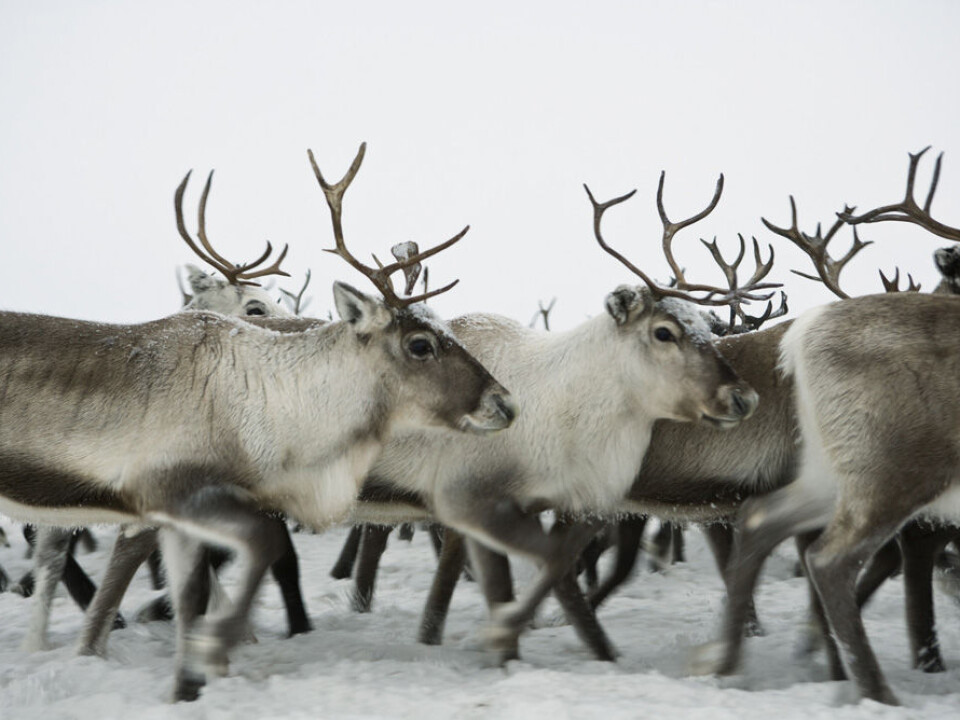
How Rudolph keeps his cool
How would you like to go for a run wearing a thick winter fur? Reindeer regulate heat by sticking their tongues out and re-directing their bloodstream.
Denne artikkelen er over ti år gammel og kan inneholde utdatert informasjon.
Reindeer inhabit the most northerly land areas of the planet. They are adapted to extreme conditions of snow and freezing temperatures, largely with a thick winter coat that is fantastically efficient in retaining heat.
“Laying around in sub-zero temperatures, snow and wind is one side of the story. But suddenly they might need to jump up and sprint like mad from a predator in heavy snow.”
So says Lars Folkow, a professor in arctic and marine biology at the University of Tromsø (UiT).
“Obviously a reindeer could soon get overheated in such a situation,” he says.

Rudolph can’t throw off this coat of fur, so he needs efficient mechanisms for shedding excess heat. Otherwise he would soon collapse and be easy prey.
We humans sweat all over our bodies and we can rid ourselves of lots of heat this way. Reindeer don’t have that option because wet fur would be a catastrophe in the biting cold.
So what do they do?
Reindeer on a treadmill
To help find out, reindeer were trained to run on a treadmill.
Together with Arnoldus Blix from UiT and Lars Walløe from the University of Oslo, Folkow monitored the animals’ pulse rates, brain temperatures and bloodstreams in several major blood vessels of the head.
“Reindeer are the best animals to work with. Once they trust a trainer, they’ll do anything for you,” says Blix in a press release from The Company of Biologists.
The animals trotted at 9 kilometres per hour on the treadmill in temperatures of 10° to 30°C.
“This is a leisurely pace for a reindeer. They can maintain a higher speed for a longer period,” says Folkow.
What occurred during the jog demonstrated how Rudolph has three physiological strategies for keeping his body temperature in check while running.
Panting
The biologists first registered that the reindeer started to breathe more rapidly through their noses. Their breath rate increased impressively from 7 breaths a minute to 260.
This allowed them to inhale chilly air, while evaporating water from mucous membranes in their noses.
Blood flowing through the sinuses was cooled down in this way and it was transported to the rest of the body to regulate temperature.
Flapping tongues
The animals continued to run and generate heat. In the next stage they started to pant harder and opened their mouths wide, letting their tongues hang out and flap around as dogs do.
Rudolph has a large tongue, full of arteries giving good circulation. Substantial evaporation of saliva from this pink organ also removes heat from its blood.
“Extending its tongue increases the evaporation surface. Like when we sweat, this evaporation removes heat from the animal,” says Folkow.
A normal body temperature for a reindeer in a cold environment is about 38°C.
The animals on the treadmill weren’t forced to exert themselves much but their temperature eventually rose to 39°.
Cooled blood
“Reindeer don’t get very hot. They have an extremely efficient apparatus for ridding themselves of surplus heat,” says Folkow.
When its temperature approached a half degree above normal, the researchers witnessed an additional mechanism for dumping heat. At 39° the reindeer’s third tactic was employed.
The chilled blood was diverted from its path to the rest of the body so that more of it streamed to its head, because cooling the brain got priority.
The cooled blood from the nose was channelled into a network of heat-exchanging blood vessels that cooled the warm arterial blood on the way to the brain.
The maximum temperature of the reindeer’s brain the researchers monitored was 39.5°.
“Humans also regulate blood flow to the body. For instance if it gets too hot we channel blood to prominent blood vessels in our skin. Some arteries contract while others are dilated,” explains Folkow.
In reindeer the narrowing of blood vessels leads much of the blood down into the body and back to the heart, so instead the blood is sent to a special structure connected to the brain.
Running with fur
Folkow explains that many ruminants have this mechanism and it has been studied previously among African antelope.
“But an antelope on the African savannah is something else than a reindeer in the north,” he says.
Sprints from predators are not the only situations where Rudolph needs mechanisms for cooling down.
Most reindeer populations trek on long migrations between summer and winter grazing grounds, sometimes several thousand kilometres. Even tame reindeer have to travel.
“Reindeer herders in Scandinavia move their herds in the spring. Consider our ideal Easter Holiday skiing conditions in the mountains with a warm sun and rotting snow, and think what it would be like having to traverse distances wearing a warm winter coat,” says Folkow.
To date the researchers have only have studied the reindeer cooling mechanisms in detail in a laboratory. Folkow would like an opportunity to study it with animals out in the wilds, to see how it works in everyday life.
------------------------------------------
Read the article in Norwegian at forskning.no
Translated by: Glenn Ostling






























